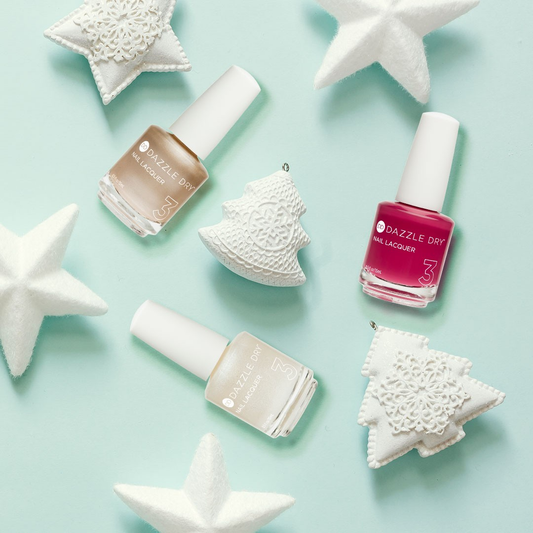How Are Nail Polish Top Coats Formulated?


How are top coats formulated?
Top Coats use the same basic ingredients found in nail polish but without the pigments and dispersing agents. The main ingredients are:
1. Solvents – The most common are ethyl acetate and butyl acetate. In the past, toluene was commonly used because it is the least expensive choice and provided better adhesion of polish to the natural nail. It is considered one of the toxic trio and most brands have eliminated it from their products. But, read the ingredients on the bottles or information supplied with products because I am aware of one popular top coat brand that contains a high concentration of toluene. So, if you or your clients are concerned about exposure to toluene, read ingredient lists.
2. Primary Film Former – This is a large polymer and the ingredient that is left as a clear film on top of the polish to provide the gloss and abrasion resistance. Without it, the polish itself would be abraded instead of the top coat taking the abrasion first. There are two polymers commonly used: nitrocellulose and cellulose acetate butyrate (CAB). CAB is the polymer used in non-yellowing top coats. If the product contains nitrocellulose, you can be sure it is not non-yellowing.
3. Secondary Film Former – This is a polymer that is added to modify the properties of the Primary Film Former. Because the primary polymers nitrocellulose and CAB are hard and could thus be brittle, the Secondary Film Former affords flexibility to the dried film. This ingredient is usually a resin or a complex polymer. Examples are tosylamide/formaldehyde resin and tosylamide/epoxy resin. Note that the formaldehyde resin has been linked to cases of allergic reactions to nail polish.
4. Plasticizer – In addition to the Secondary Film Former, small molecules are added to increase the flexibility of the product. In the past, dibutyl phthalate (DBP) and other phthalates were commonly used but they have been formulated out because they are linked to cancer or reproductive toxicity. Some brands replaced DBP with triphenyl phosphate (TPHP) which is also toxic, an allergen, and an endocrine disruptor. I prefer plasticizers that are not phosphates, phthalates, or camphor such as triethyl citrate, tributyl citrate, butyl stearate, sucrose acetate isobutyrate, and dipropyleneglycol dibenzoate because of their healthier safety profiles.
5. Other ingredients – UV screens are added to neutralize the free radicals so that the polish resists change of color with exposure to sunlight. Benzophenone-1 is the most common and octocrylene is sometimes used.
How do they work in conjunction with nail polish?
Top coats go on top of the polish. They must have an affinity for the polish so that they form a continuous film over the entire polish surface. Otherwise, the top coat will crack, flake, or peel off the polish. Top coats do not increase the adhesion of the polish to the natural nail and therefore, contrary to some impressions, if polish chips prematurely with one brand of top coat, using another brand will not provide longer wear. A better top coat may dry the polish faster, maintain the high gloss of the polish longer, or maintain the original color of the polish longer due to having a more effective sunscreen or antioxidant.
What are nail polish base coats?
The base coat is the first layer in direct contact with the nail plate. Therefore, it is the layer that relates to the adhesion of the polish to the nail and the polish’s longevity of wear. The base coat should have a strong affinity to both the nail and the polish for the polish to remain chip-free between polish changes. Except for Dazzle Dry®, all base coats are made up of the ingredients found in the polishes but formulated with adhesion promoters which are usually copolymers of acrylates, glycols, and polyamides.
What makes Dazzle Dry’s base coat different from all other brands is that it uses a proprietary elastic polymer (polyurethane) to provide its longevity of wear. This polymer is compatible with the polish and has excellent adhesion to the nail, while its rubbery nature allows it to flex, expand, and contract with the nail. Thus, as the nail expands during its immersion in water, this polymer stretches and as the nail shrinks to its dry state, this polymer retracts, all the while keeping its attachment to the polish which does not go through the same changes in dimensions as the nail.





